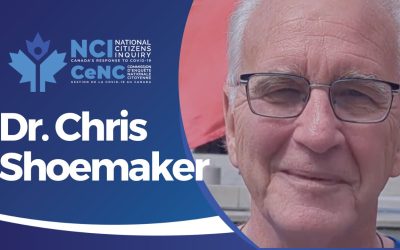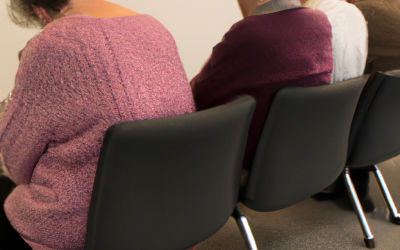Pushed by its student wing, the American Medical Association called for the ban of conversion therapy1 during mid-November meetings in San Diego. The decision will add force to the political movement to ban conversion therapy—the turning of someone away from homosexuality or transgenderism. Politicians and the public look to medical associations as knowledgeable authorities who rightfully inform the public on policies relevant to their expertise. The problem is that very ability to influence made them a target for homosexual activism for the past 40 years. By now, politics has completely compromised these associations.
Ronald Bayer’s book “Homosexuality and American Psychiatry: The Politics of Diagnosis”2 tells us where this all began. In 1970, the American Psychiatric Association (APA) had its annual meeting in San Francisco. In those days, most psychiatrists viewed homosexuality as a disorder. So when the APA met in the gay capital of America, homosexuals took Saul Alinsky’s Rules for Radicals and struck fear into the medical establishment.
“Guerrilla theater tactics and more straightforward shouting matches characterized their presence,”3 Bayer writes. When Dr. Irving Bieber, an authority on transsexualism and homosexuality talked at a panel discussion on the subject, someone yelled, “I’ve read your book, Dr. Bieber, and if that book talked about black people the way it talks about homosexuals, you’d be drawn and quartered and you’d deserve it!”4
Later, Australian psychiatrist Nathaniel McConaghy spoke to a crowded room to discuss the efficacy of “aversive conditioning techniques” to treat sexual deviation. He suffered shouts from the crowd of “vicious”, “torture”, and “Where did you take your residency, Auschwitz?” One protestor yelled, “We’ve listened to you, now you listen to us!” and made a list of demands. Confrontations ensued, and the meeting was shut down. Most psychiatrists left in anger. The few that stayed behind listened to homosexuals tell them their profession was, as Bayer put it, “an instrument of oppression and torture.”5
In future APA meetings, homosexuals had an increasing presence while opposition to homosexuality became increasingly muted (who wanted to get called a Nazi after all). By 1973, homosexuality was removed from the official DSM list of disorders, even though the opinions of most psychiatrists hadn’t changed. In 1977, 2,500 psychiatrists were asked if homosexuality was “a pathological adaptation.” Sixty-nine percent agreed, 18 percent disagreed, and 13 percent were unsure.
The American Psychological Association (a different APA) also took homosexuality off its list of conditions in 1975. The motion to do so was introduced by Dr. Nicholas Cummings, who later served as the APA president from 1979 to 1980. Ironically, it would be Cummings in future years who witnessed many homosexuals turn straight while under his care.
Cummings spent twenty years as the Chief of Mental Health with Kaiser-Permanente. During that time he saw 2,000 patients concerned with their homosexuality, and his staff saw another 16,000. Few came in with the express goal of changing their lifestyle, but wanted help with aspects associated with it, such as transient relationships, disgust or guilt about their promiscuity, fear of disease, and desire to have a traditional family. Of the 18,000 treated, two-thirds had satisfactory outcomes, and 2,400 clients reoriented to heterosexuality.
The APA once adhered to the Leona Tyler Principle which required that public stands be backed by scientific evidence. In a 2012 interview with LifeSiteNews, Cummings reported that, “By the mid 1990s, the Leona Tyler principle was absolutely forgotten [and] political stances seemed to override any scientific results. Cherry-picking results became the mode. The gay rights movement sort of captured the APA.”6
Political correctness had so taken over that the psychiatric body that Cummings said, “If I had to choose now, I would see a need to form an organization that would recruit straight white males, which are underrepresented today in the APA.”7
A similar story happened with psychiatrist Robert Spitzer. He played an important role in changing the psychiatrists’ diagnostic manual in 1973, but took time 30 years later to interviewed 200 people helped by conversion therapy. Instead of finding harm, he said, “To the contrary, they reported that it was helpful in a variety of ways beyond challenging sexual orientation itself.” He believed as a result that the APA should stop applying a double-standard by discouraging reorientation therapy and actively encouraging “gay-affirmative” therapy. Of the latter, he said there is no “rigorous scientific evidence of effectiveness.”8
Yet, that had not stopped the psychiatric association from condemning conversion therapy in 1998…despite lacking a single major study to support their stance! Shidlo and Schroeder tried to fill that gap in 2002 with their, “Changing Sexual Orientation: A Consumers’ Report.”9 However, its bias is undeniable. Interview subjects were recruited through an advertisement that read, “The National Lesbian and Gay Health Association wants to hear from you. The organization is conducting research for a project titled ‘Homophobic Therapies: Documenting the Damage.’” Of course they found complainers.
Conversion therapy horror stories seem to be the only ones that make it to the media. But they are not representative of typical practices—nor their results. Homosexuality: What the Research Shows,”10 a 2009 publication in the Journal of Sexuality,11 is a better examination. A consistent picture emerges: such therapy does change sexual orientation in some cases; but even where it does not, participants usually find the therapy helpful regardless. Usually the therapist is looking at more issues than just sexual orientation, and dealing with past rejection, traumas, and relationships, leaves the participant with more wholeness and mental health.
Non-affirmative therapies for transgenderism came under the same condemnation as those for homosexuality, and in a similar progression. When the psychiatric APA took homosexuality off of its list of disorders, it did leave “sexual orientation disturbance” as the condition of someone distressed about their homosexuality. (This, too, was removed in 1987.) Gender identity disorder, the belief that one was a different gender than what their body was, was once treated as an unfortunate disconnect with reality. But later, its name was also changed to gender dysphoria, drawing attention to the distress over the discrepancy, instead of viewing the inward sense as a distortion to be corrected.
In time, these non-affirming therapeutic approaches were also declared to be distressing and harmful, despite a lack of evidence. Studies in Europe and North America showed that 60 to 80 percent of children with gender dysphoria “desist”—that is, come to accept their own sex. Dr. Devita Singh did a follow-up study of 100 patients from Dr. Kenneth Zucker’s Centre for Addiction and Mental Health. He found that 88 percent had desisted.12
However, Ontario passed legislation that banned conversion therapy. Dr. Zucker’s clinic was investigated and he was dismissed, despite his 35 year practice and prominence as one of the greatest authorities on gender identity disorder in the world.13
Similarly, the Trudeau Liberals also campaigned on a promise to criminalize conversion therapy across the country regardless of where it happens.14 Even if it is a church basement, the practitioner would go to jail, and any associated charity (church or otherwise) would lose their charitable status.15
These laws are misguided. Without adequate justification, they bar therapies that people would choose for themselves or parents might choose for their children. They also threaten to oppress religious freedom. The monotheistic religions of Judaism, Christianity, and Islam, have always stood against homosexual practices. The people and institutions promoting those ideas will either become illegal or compromised by the threat of the state.
The ban on conversion therapy is about far more than simply banning a therapeutic practice. It is about banning religious conversion too. Ultimately, it is about imposing an oppressive and deceptive ideology as the dogma of the state. No heretics, psychiatric, psychological, or religious will be allowed.



